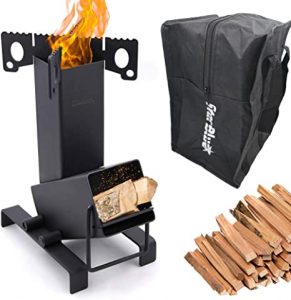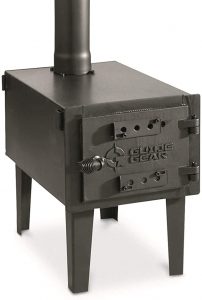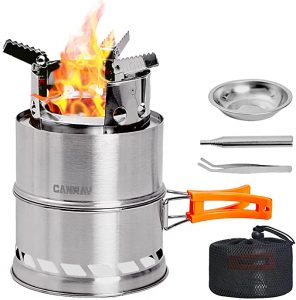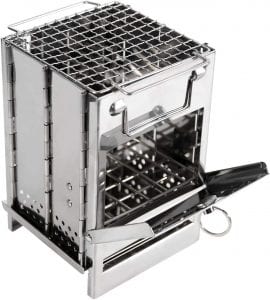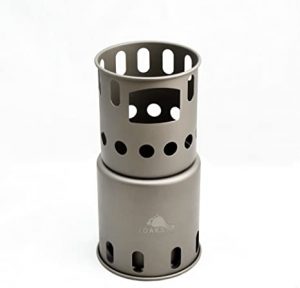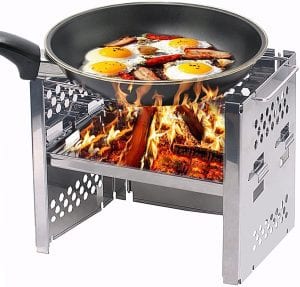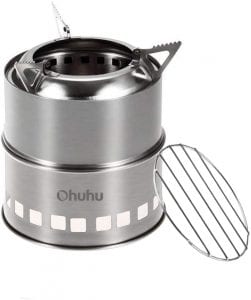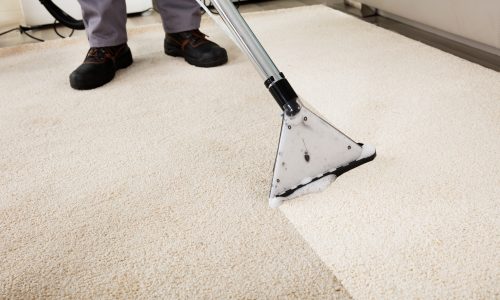The Best Wood-Burning Stove
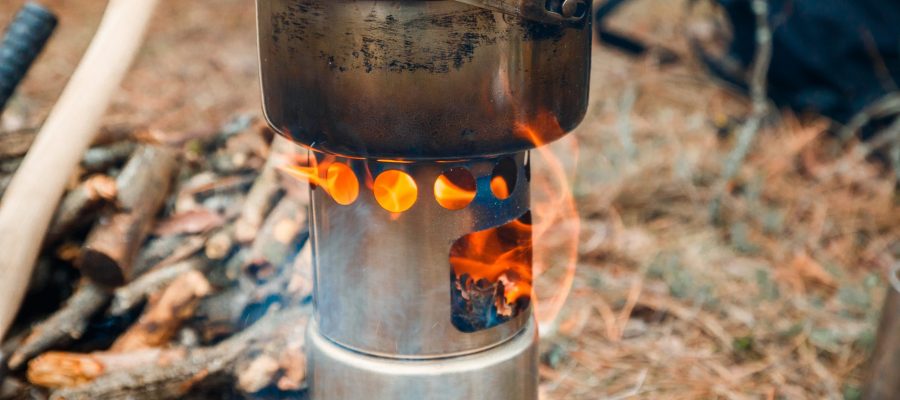
Our Review Process
Don't Waste Your Money is focused on helping you make the best purchasing decision. Our team of experts spends hundreds of hours analyzing, testing, and researching products so you don't have to. Learn more.
Our Picks For The Top Wood-Burning Stoves
- 1. StarBlue Carbon Steel Portable Wood-Burning Stove
- 2. Guide Gear Vented Heat-Resistant Finish Wood-Burning Stove
- 3. CANWAY Portable Wood-Burning Camping Stove
- 4. REDCAMP Stainless Steel Folding Wood-Burning Camp Stove
- 5. TOAKS Compact Titanium Hiking Wood-Burning Stove
- 6. Unigear Gas Powered Wood-Burning Camp Stove
- 7. Ohuhu Lightweight Stainless Wood-Burning Stove
If you love spending time in the great outdoors, then this wood-burning stove is a must. It features a set of handles for portability and is able to stand upright even if the ground is uneven. The cooktop is also interchangeable, allowing you to cook with a flat pot or a curved saucepan.
Travel-Friendly OptionIncluded with this wood-burning stove is a handy carry bag that keeps the unit protected when not in use.
Constructed from a galvanized steel fire box, this wood-burning stove is solid and designed to last. It can be used for both heating and cooking, which is perfect when traveling. In fact, the stove comes apart, so you can easily pack it in the back of your truck or in one of the storage compartments in your RV.
Most VersatileYou'll find this wood-burning stove works well in your backyard, at a camp site or by the lake when on a fishing trip.
This wood-burning stove provides a stable base for your cooking vessels. It has three arms for pot support. The stove distributes heat evenly to cook your food.
Sturdy BaseThere are three arms for pot support on this wood-burning stove.
You can bring this wood-burning stove with you anywhere as it folds into a small size. It is made from stainless steel and is durable and lightweight. The stove uses leaves, twigs and other natural items in addition to wood for fuel.
Easily CollapsibleThis wood-burning stove folds into a small, portable size for easy transportation.
Buying Guide
There is something very nostalgic about cooking on a wood-burning stove when you’re camping in the great outdoors. Even if it’s your first time, a wood-burning stove for camping makes you feel like you’re a pioneer in the backcountry, on your way to explore the majestic landscape. The smell of the burning wood adds another layer to the sensory experience.
For many people, wood-burning stoves are much more convenient to use while camping because they are highly portable, easy to use, inexpensive and eco friendly. Plus, unlike other camping stoves, you don’t have to carry around or deal with propane or another fuel source.
There are many varieties of wood-burning stoves available, so how do you know which one is right for you?
One of the most important things to consider when you’re in the market for a wood-burning stove for camping is the weight. While most wood-burning stoves are made from stainless steel, which is lightweight, some stoves are heavier than others. This is as a result of their size or attachments. If you’re going to have to carry your stove far, opt for a lighter, smaller wood-burning stove. However, if you’re going to be car camping or don’t need to carry your supplies a great distance, you can opt for a heavier wood-burning stove with more bells and whistles.
Stability and support for your cookware is also a key element to look for. The wood-burning stove should be able to hold up the pot or pan you use to cook in a stable position, and it should be able to balance the cookware without your support. Some wood-burning stoves also have pot and pan handles, which are like small support arms, to ensure the cookware stays in place while cooking. The last thing you want is for your pan and all its contents to slide off the stove while you’re making dinner after a long hike.
When you’re camping, packing space is usually scarce. Some wood-burning stoves can fold down into small sizes so they are easier to store and transport. This ensures you have more room in your bags for other essential items like food. Don’t forget about heat efficiency, otherwise it may take hours to make a meal. Look for a wood-burning stove that has plenty of air holes, which allow the flow of oxygen into the stove to keep the fire burning. The stove should also have a large enough fuel door so you can add in wood, twigs and pinecones while you are cooking a large meal.
What to Look For
- When you’re cooking in the great outdoors with your wood-burning stove, safety is of the utmost priority. Be sure to always place your wood-burning stove on a completely flat surface. This can sometimes be hard to find, so you might have to move aside some dirt and brush to create a flat space. If you place your stove on an uneven surface, it may accidentally tip over while it is lit, which can be a dangerous fire hazard.
- Gather your wood, twigs and pinecones before you start cooking. It’s best to stay nearby your stove while it is burning, so you want to make sure you have your wood ready to go. Leaving your stove unattended while you’re out collecting twigs is never a good idea.
- When it’s raining, you may be tempted to use the wood-burning stove in a covered area like a tent to cook your meal. This is very dangerous and should never be attempted. Tents are highly flammable and using a wood-burning stove inside a tent is a fire hazard.
- When you’re done using your wood-burning stove, make sure it is completely out. The stove takes time to cool down before you can clean it and pack it away for the next trek. Be sure to clean it well after each use (once it has cooled) so that it can perform at its best at the next use.
- Most wood-burning stoves for camping are meant to be used outdoors, not inside trailers or other structures. Be sure to carefully read the manual and instructions if you’re thinking about using the wood-burning stove inside. It may be a fire hazard or carbon monoxide hazard, both of which are dangerous.
- If you’re camping with young children or pets, create a safe perimeter around the wood-burning stove where they are not allowed. Having young children or pets too close to the stove could result in them accidentally knocking it over, which can result in painful burns and injuries.
More to Explore
While wood-burning stoves are a popular choice for camping trips, there is another kind of wood-burning stove you can use at home. Many people prefer using a wood-burning stove to an HVAC system for keeping their homes warm. This type of stove is especially designed for heating a home, and was commonplace for several hundred years.
Wood stoves are exceptionally efficient when it comes to heating up a room, especially as compared to fireplaces. While fireplaces only convert about 10% to 20% of the wood they burn to heat, wood stoves covert about 50% to 70% to heat. Depending on the size of the wood stove and where it is placed in the home, it can heat up the entire house or parts of a house.
In addition to heat, wood-burning stoves in the home provide ambiance. You can actually hear the fire crackling as it works, and the orange-red-yellow glow from the stove creates a warm and inviting atmosphere. Because these kinds of stoves are no longer commonly seen in houses, they can also act as a unique décor feature.

